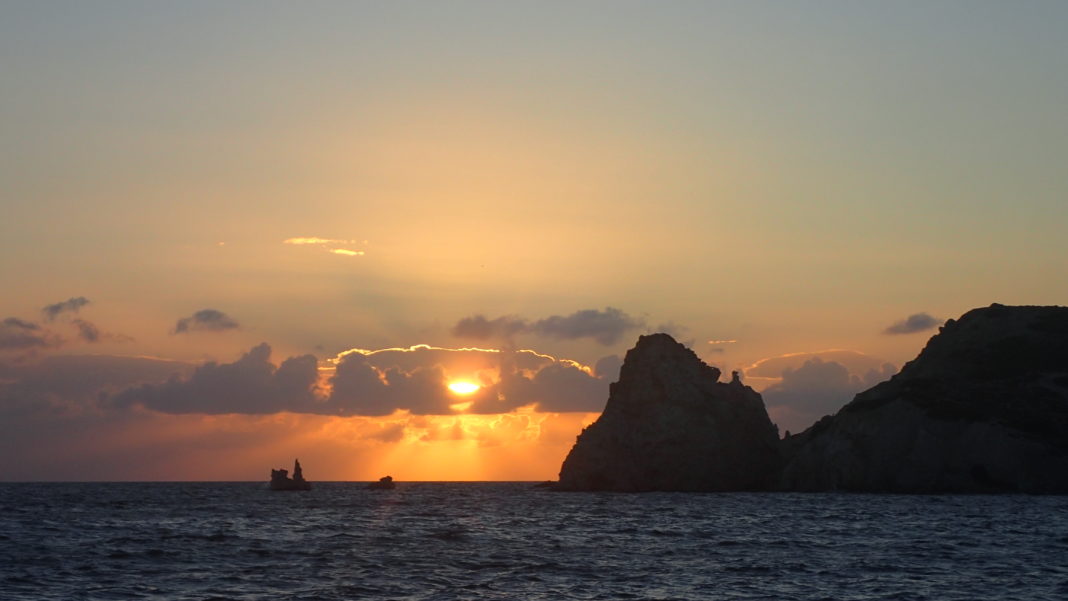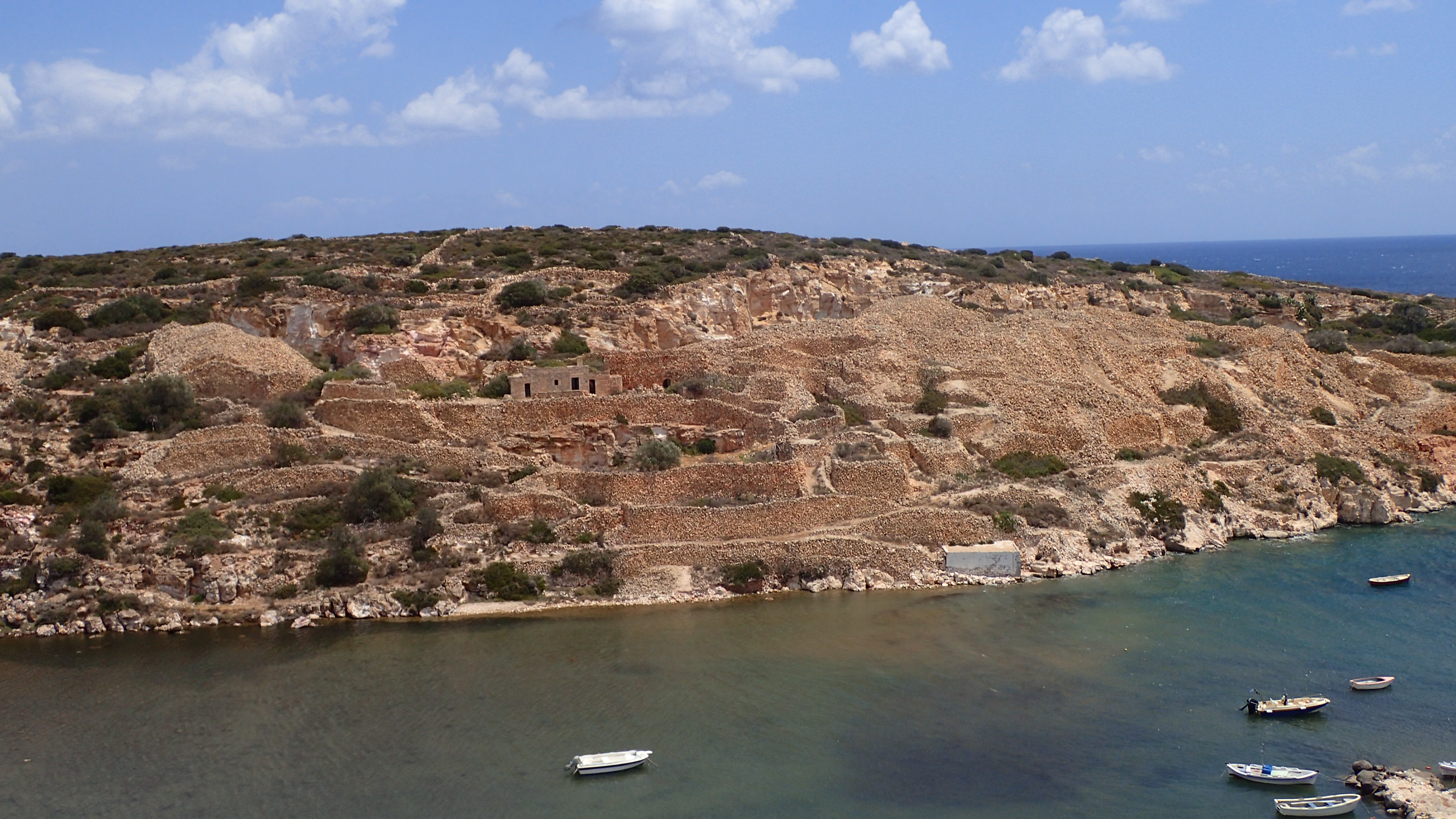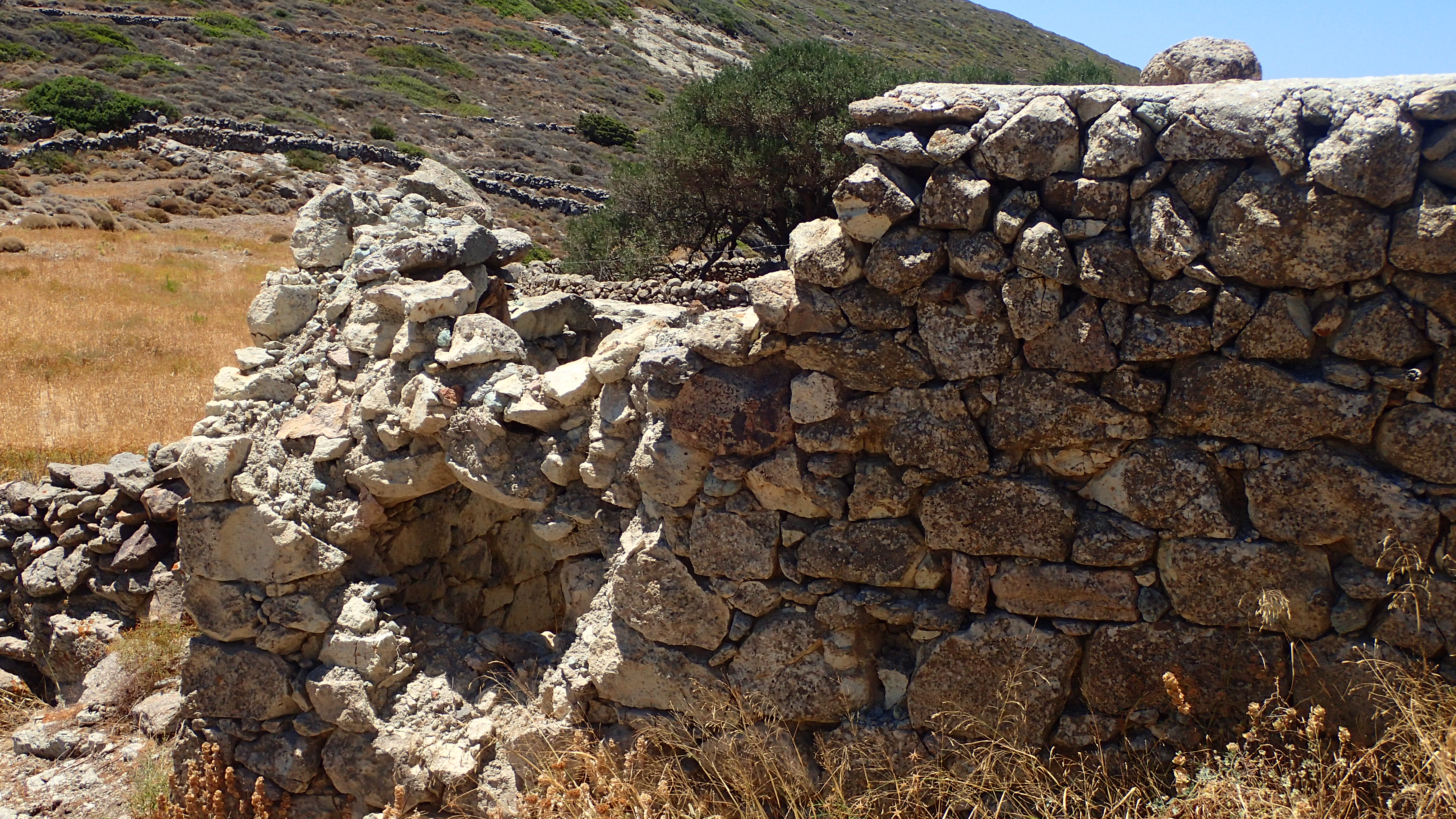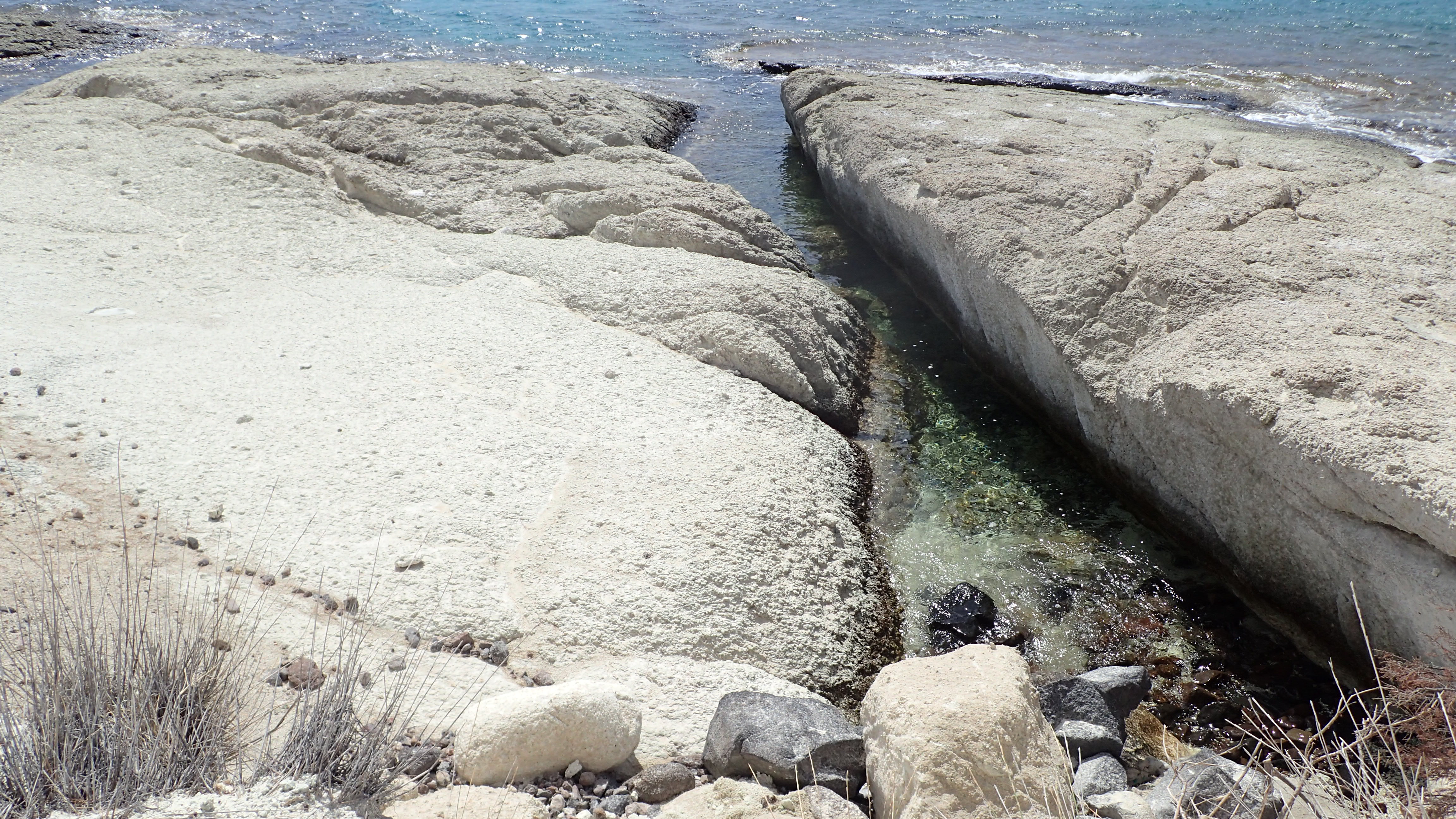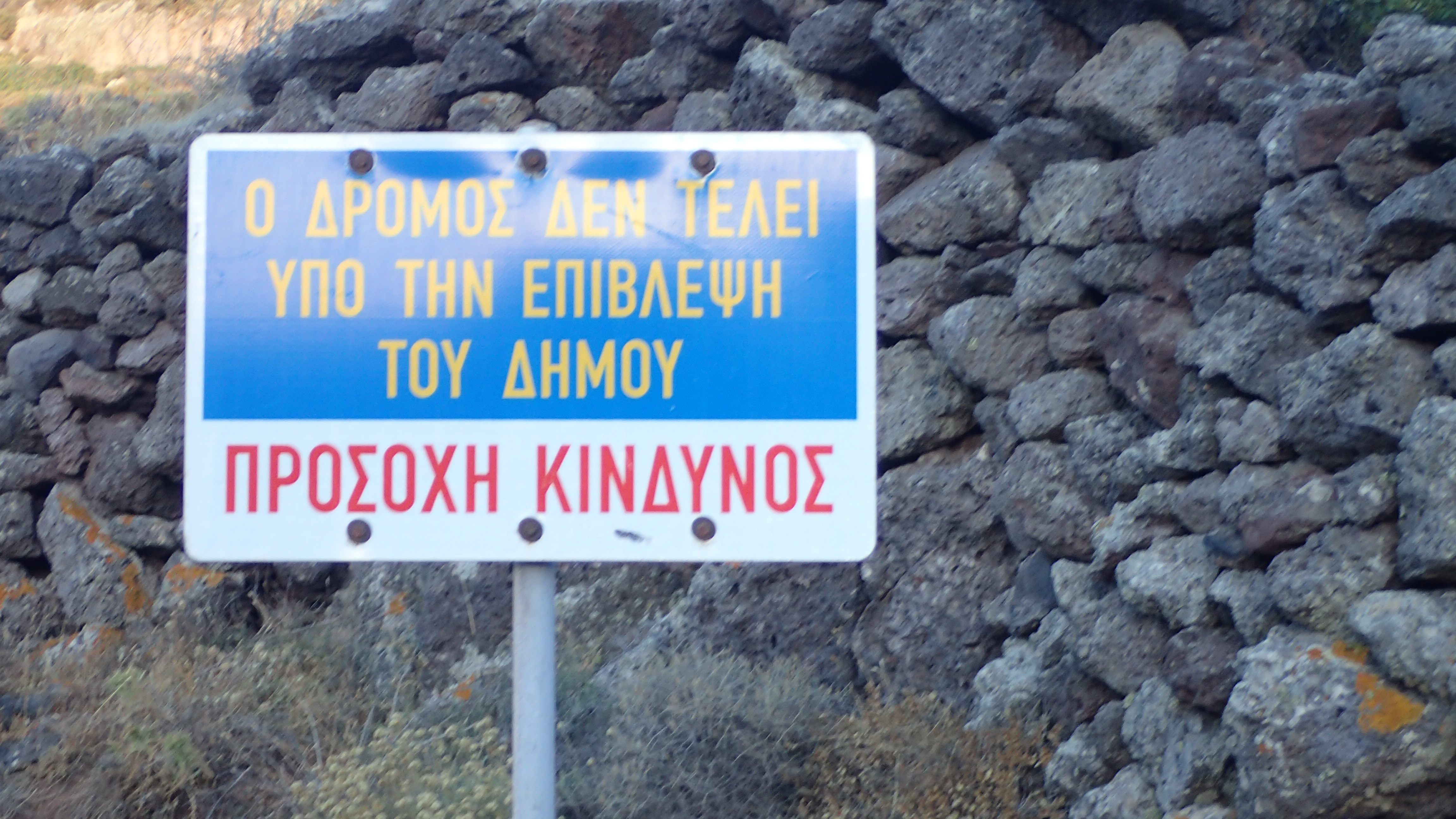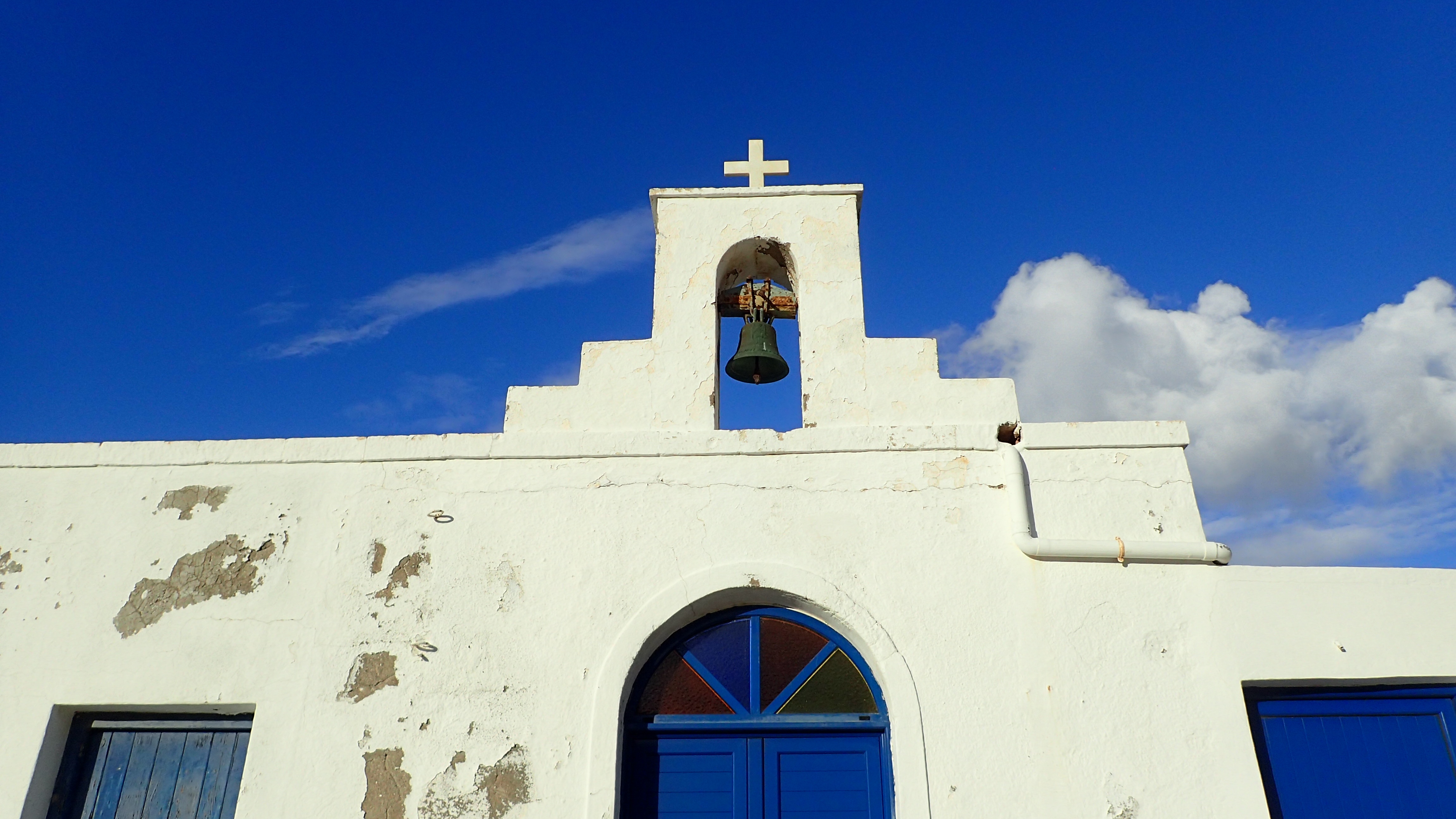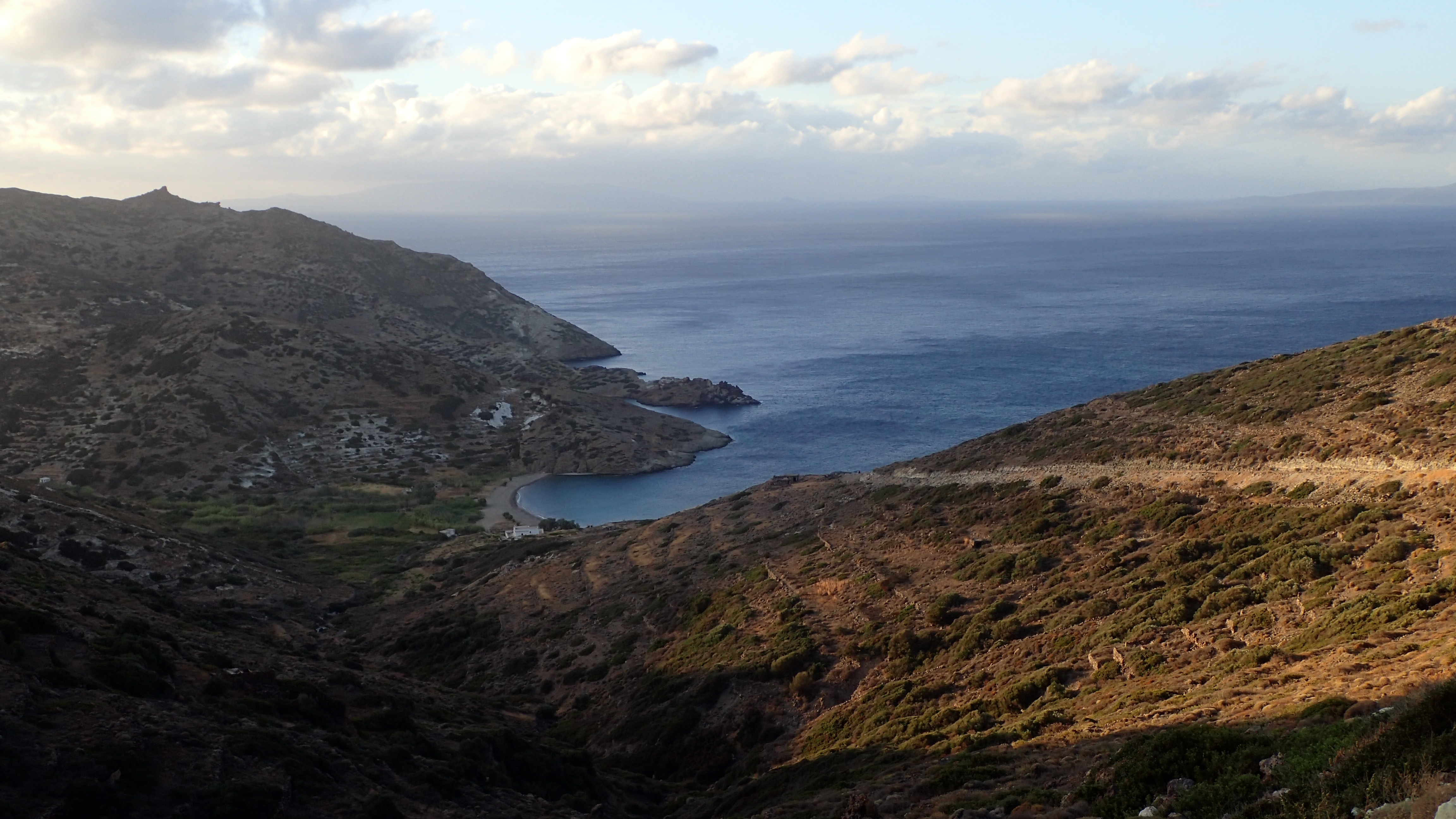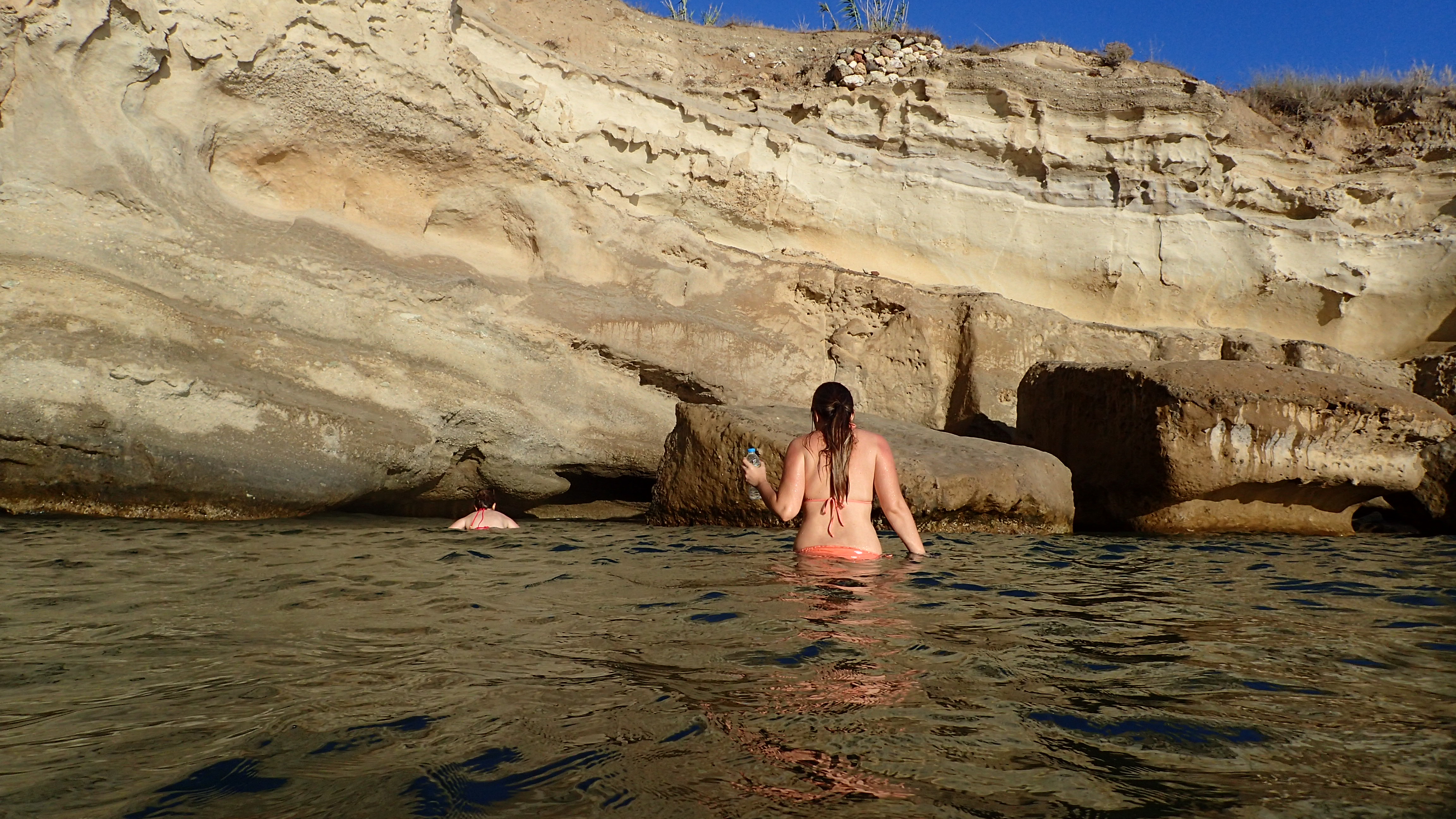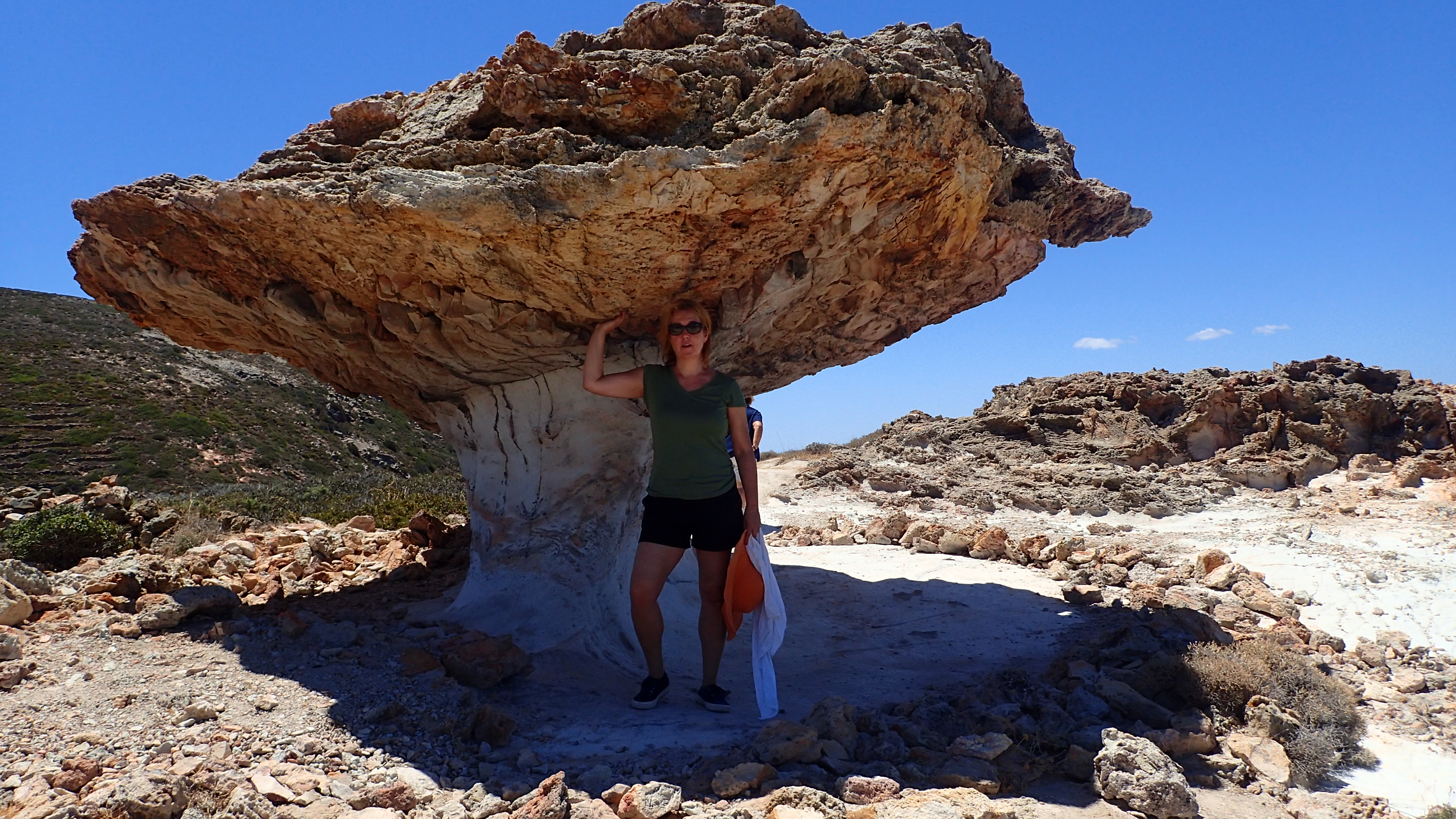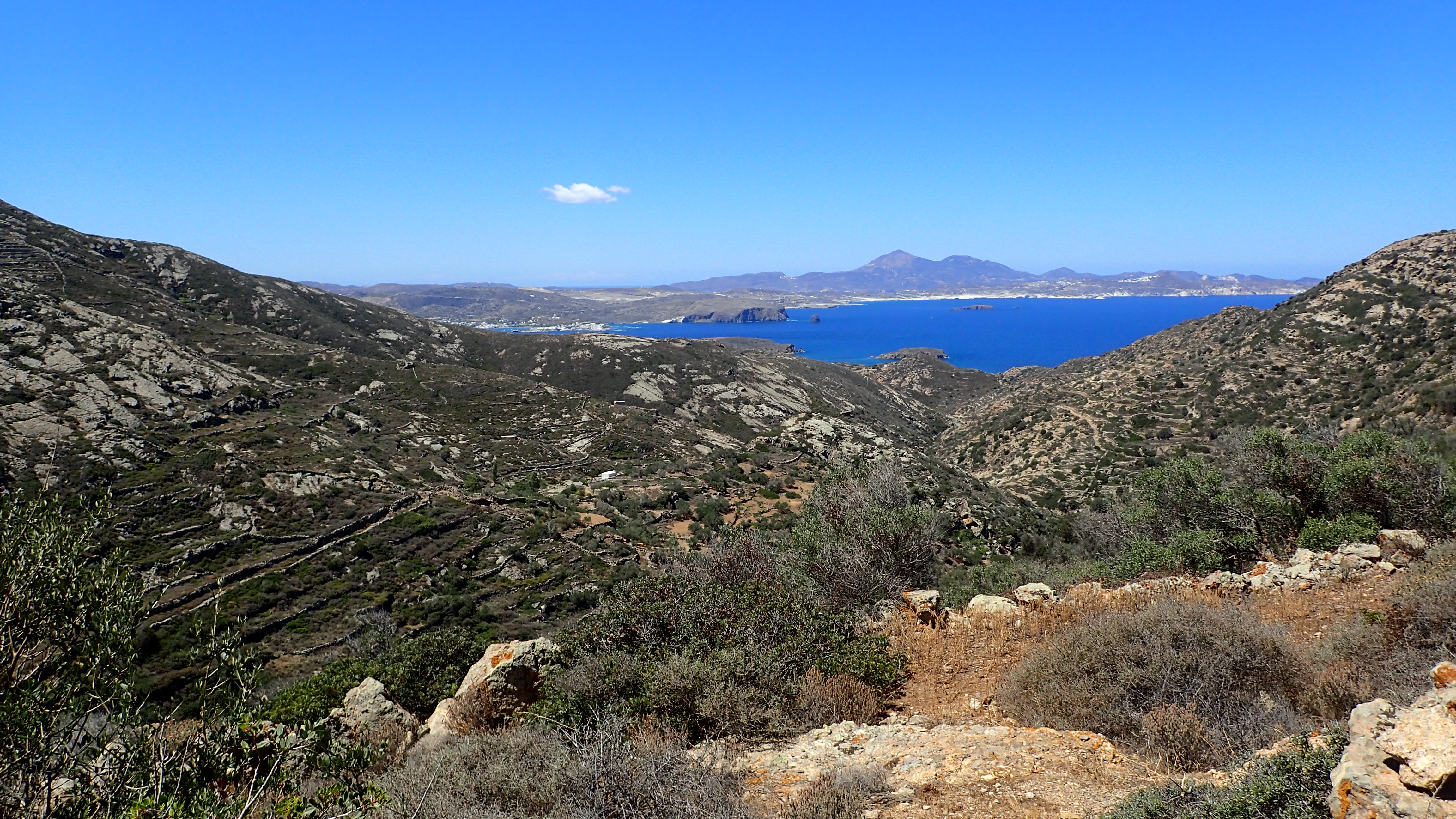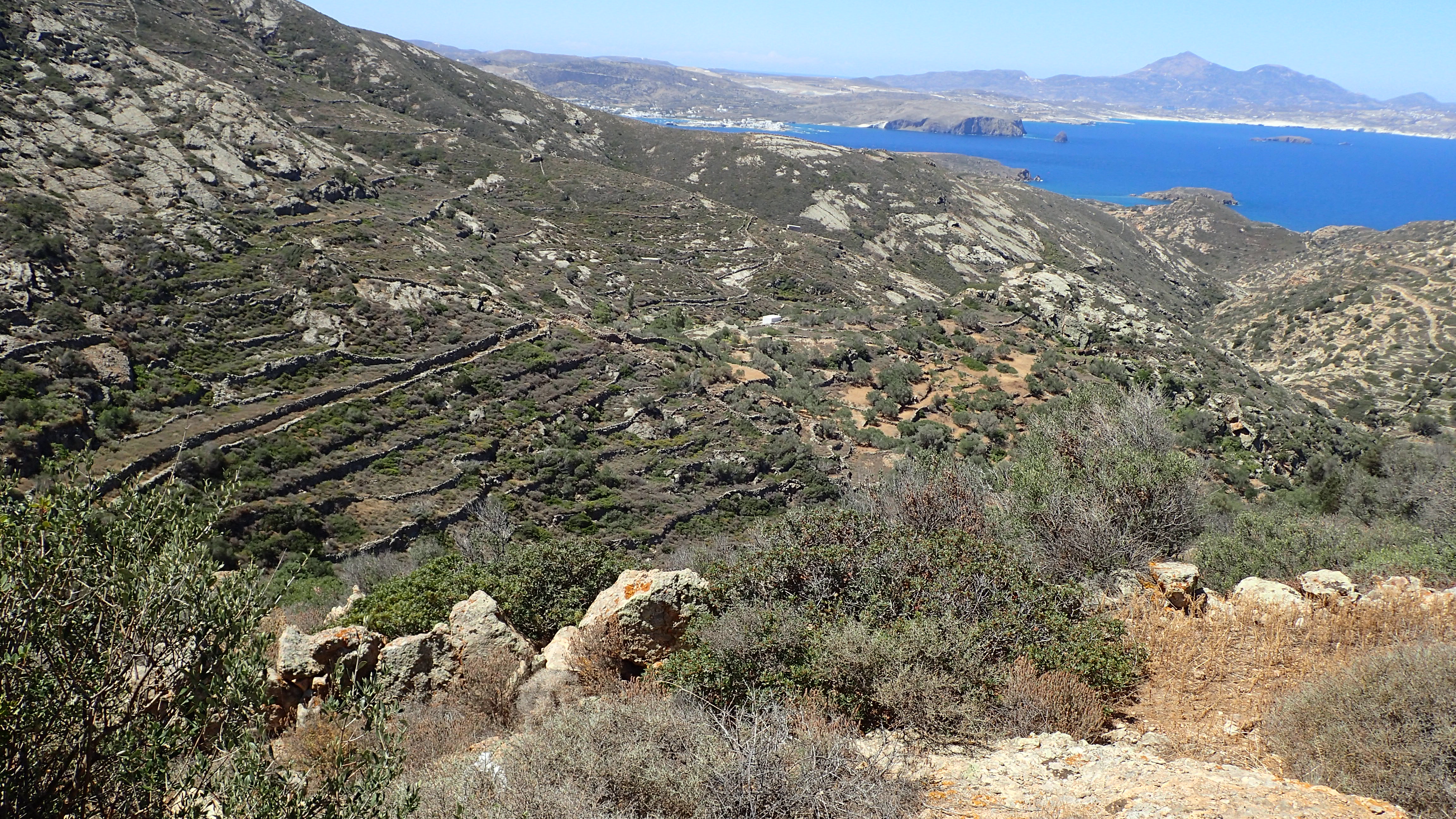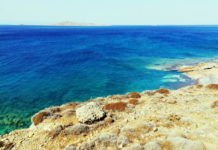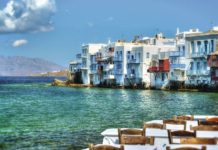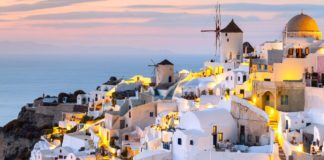Table of Contents
The Wild Landscape of Kimolos
“Don’t think of Kimolos so much as an island;” said our guide and friend Dimitris Ventouris aboard the Korais. “it is an island, of course. But first and foremost, it’s a volcano.” It’s a dramatic introduction. But it proves true.
Kimolos’ beauty is pure and uncompromising- a raw and wild place. With just the one town- Chorio- and a small settlement at the port- it’s untouched but for the stone walls that terrace its hillsides. You have to invest in the Kimolos experience to get the most out of it, and when you do, the rewards are high.
The Bright, White Earth of Kimolos
The Greek word for chalk “Kimolio” comes from here. True to its name, the island glows white with it. Some of the dirt roads are easy to navigate by moonlight, as though covered with a fresh snowfall. The sands are white with it. And so is the floor of the sea; the palate of the Aegean is even brighter here than elsewhere. People will think you have photo-shopped your vacation pictures.
A Dry, Elemental Island
Kimolos’ wild Cycladic landscape is primitive and elemental. Dramatic, stark rock formations shape the experience, rather than green hills. There are few trees, but there always seems to be one just where you would welcome its shade, like at the edge of a beach. Whatever manages to thrive on this dry island, thrives in style. The island’s vegetation is sparse but hearty. There is an abundance of cactus. They call capers here the “Roses of Kimolos.” They even grow between cracks in stones of the village. Small tomatoes are packed with sweet, tangy intensity.
High winds intensify the experience. They lull you into a deep sleep by night. By day, they chase the thoughts from your mind. They shape the landscape- the rough seas and winds have sculpted the stone of the island into beautiful formations.
The Stone Walls and Terraced Slopes of Kimolos
The island has few flat areas. Generations- not to say centuries- of resourceful islanders have terraced the steep hillsides to make room for crops, clearing the soil of stones. These walls are held together only by skill- there is no mortar or cement. Stones are fitted together in such a way that they hold the earth in across the centuries. The population of the island has never exceeded 3,000 (it’s now about 600). Yet even in the most remote of spots with no trace of habitation, you’ll find as many as thirty terraced steps. The effect is that the entire island is an art installation- like a Christo made by the anonymous hands of centuries.
Exploring Kimolos
The roads are few and often rough, untraveled by many. This adds to the sense of remoteness, adventure. Come prepared for your summer beach holiday – you will find no towns (there is just the one), no kiosks.
The Remote Beaches of Kimolos
Like many of the best things in life, the pleasure of the experience is sharpened when you have to work for it. No swim is sweeter than the one that refreshes you after a dusty, bracing hike.
These two beaches need a rough drive, plus a hike, to reach them. They are far from traces of civilization (except for a church). Bring ample water. Fotis, of the “Kimolistes“- a club that celebrates nature and culture on the island, brought us to some. His son young Simos – already a fine adventurer – joined us!
Monastiria Beach
One day we drive along a thrillingly high ridge and then descend until the road grows too narrow. There is a sign (in Greek) warning that the descent from that point is rough. Heed the sign. There’s barely room to turn around. From here, it’s a steep hike downhill to the church and a nearly deserted beach. This is Monastiria. It’s perfect- sandy and long, with the shade of a few trees. But this is a landscape that puts you in the mood for adventure. So we hike over a rocky cliff to the next one, which is more perfect still.
Soufi Beach
If you cross the perfection that is Monastiria beach, then climb a rocky hill (at the top, look back and see you car- high in the distance), you’ll reach Soufi about ten or fifteen minutes later. It’s curved around a deeper cove, sandy and well shaded. Swimming out into the protected bay, you can enjoy the changing shapes of the rock formations.
Tip: you won’t want to leave. Check the time of the sunset while you still have a signal, and give yourself ample time to return to your car and drive back to a paved road while there is still enough light in the sky.
Mavrospilia Beach
This beach is reachable by car, but is in a remote spot, wild and without services. Bring water, maybe some wine and a picnic: couples really seem to like it. This is where the rock formations of the island are at some of their most dramatic. They form peaks jutting out of the sea. You can imagine all kinds of shapes looking at the, It’s rumored to have the best sunsets; we couldn’t argue.
The beach is actually two- you can swim around the cliff (carefully- the floor of the sea rocky and uneven) for an even more private beach. The sea can be rough here. Use caution.
Skiadi: Natural Landmark of Kimolos
A treacherous and exciting drive takes you to a path leading to this formation. The word “Skiadi” means “visor”. But what you want to look for is the word “ΚΑΠΕΛΟ” (“hat”)- spray painted onto a rock, with an arrow pointing the way. (Actually Skiadi is more commonly described as a giant mushroom.) Skiadi is one of Greece’s natural wonders, and it’s also the best hike on Kimolos- a little uphill, a little downhill, lots of flat areas. It’s not more than half an hour. The path takes you through terraced hillsides and stone paths for transporting harvests. There are views of the sea and surrounding islands- Antimilos, and the closer by Milos. We can even see the town of Pollonia:
“Why do they say Pollonia’s the prettiest town of Milos?” asks Dimitris. “Because it has a view of Kimolos!” he says. It may be an old joke, but it works well on us.
Skiadi, true to its name, is big enough to shade us. The views are splendid. The other rock formations on the plateau look they they came from beneath the sea. It’s worth the hike. But even if there were nothing here at all, the hike itself would be worth taking.
It’s worth renting a car to explore the island- there’s just the one car rental in Psathi harbor. You’d do well to check the tires and the brakes before venturing into the island’s wilder corners.
By all means, also visit the Kimolistes site (it’s in Greek- have a friend help) to find out what excursions they have organized. They’re also great company!

